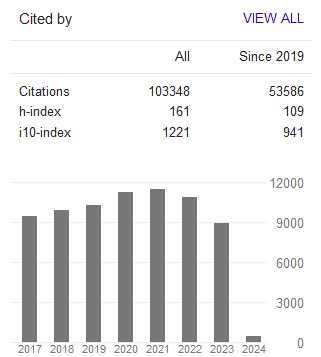The Relationship amongst Person-Organization Fit, Safety Consciousness, Safety Climate and Safety Behavior
- Ferit Olcer
- Cemal Durmuscelebi
Abstract
Technological advances have reduced accident rates caused by machine-related errors, accidents that have occurred in individual and organizational errors are still continuing. Safety perceptions, attitudes and beliefs of people and their personality traits emerge safe or unsafe behaviors in the work environment. In addition, high congruence of employee characteristics and organizational characteristics supports the creation of a safe working environment. The purposes of this study were to examine the effect of airline employees’ person-organization fit, and safety consciousness on safety behavior and investigate the mediation role of safety climate on these effects. The data collected from planning, operations control, flight safety and quality employees of an airline operating in Turkey (N=178). Data were analyzed with the SPSS 22.0 program and factor, correlation and regression analyzes were performed to identify interrelationships with descriptive statistics. Findings show that person-organization fit, and safety consciousness had positive effects on safety climate and safety behavior; safety climate had full mediation role in the effect of person-organization fit on safety behavior; and had a partial mediation role in the effect of safety consciousness on safety behavior.
- Full Text:
 PDF
PDF
- DOI:10.5539/ijbm.v13n9p208
Journal Metrics
Google-based Impact Factor (2023): 0.86
h-index(2023): 152
i10-index(2023): 1168

Index
- Academic Journals Database
- AIDEA list (Italian Academy of Business Administration)
- ANVUR (Italian National Agency for the Evaluation of Universities and Research Institutes)
- Berkeley Library
- CNKI Scholar
- COPAC
- EBSCOhost
- Electronic Journals Library
- Elektronische Zeitschriftenbibliothek (EZB)
- EuroPub Database
- Excellence in Research for Australia (ERA)
- Genamics JournalSeek
- GETIT@YALE (Yale University Library)
- IBZ Online
- JournalTOCs
- Library and Archives Canada
- LOCKSS
- MIAR
- National Library of Australia
- Norwegian Centre for Research Data (NSD)
- PKP Open Archives Harvester
- Publons
- Qualis/CAPES
- RePEc
- ROAD
- Scilit
- SHERPA/RoMEO
- Standard Periodical Directory
- Universe Digital Library
- UoS Library
- WorldCat
- ZBW-German National Library of Economics
Contact
- Stephen LeeEditorial Assistant
- ijbm@ccsenet.org
